
Beauty, it has been said so many times before, is in the eye of the beholder. This has never been more true than when it comes to the subjective tastes of cinephiles. The following list of Ten Beautiful Films is an attempt to bring together a group of movies from various ages, tastes and cultures that, in one way or another, fill the definition of ‘Beautiful’.
From a simple and classic definition of beautiful, in terms of pure, clean visual aesthetics, from films such as Baraka, through to the haunting stark beauty of Bergman’s The Seventh Seal, not everyone will agree on the label beautiful for every film. This is to be expected. Instead we hope to provide a cross-section of films that will speak to the majority of interpretations of what beauty can be considered specifically to be in cinema, and why.
10. In the Mood For Love (Cinematographer: Christopher Doyle)
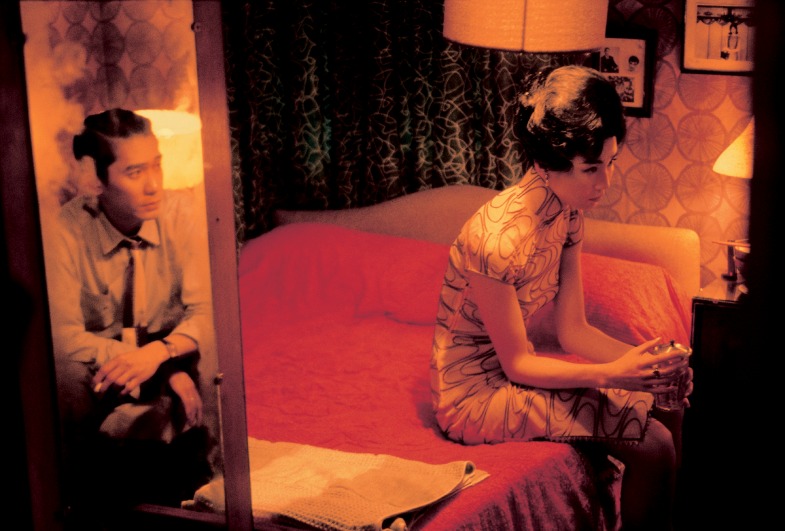
Second Wave Hong Kong Auteur Kar-Wai Wong had already established his unique visual aesthetic with films such as As Tears Go By (1988), Days of Being Wild (1990), Ashes of Time (1994), Chungking Express (1994), Fallen Angels (1995) and Happy Together (1997)—and won Best Director at the Cannes Film Festival before taking a thirteen year hiatus from filmmaking. Wong had received dozens of prestigious nominations and awards too and was listed among Asia’s top directors. And that was all before he returned to the director’s chair for In the Mood for Love (2000).
In keeping with Wong’s established aesthetics, In the Mood for Love is a highly stylized and emotionally resonant little independent film set in 1960’s Hong Kong. Whilst difficult to describe, this beautiful little story, set in Hong Kong apartment building during the 1960’s, is about a man and a woman who move into neighboring rooms on the same day.
After weeks of passing each other in cramped hallways, like ships in the night, they eventually form a bond when they realize that their respective husband and wife are cheating on them. While essentially a very simple narrative, In the Mood for Love is laced with highly nuanced acting, production design, music and cinematography that elevate it to the status of a masterpiece.
Full of vibrant patterns, colors and geometry that emerge tastefully and contextually within the film, In the Mood for Love produces a rich sense of place and time. Like visual alchemy, its motifs merge, synthesize and dissolve into one another with painstaking execution and finesse.
Similarly the cinematography by Australian, Christopher Doyle, produces a subtle and entrancing effect that allows one to almost forget the camera is even there, on the one hand, while conversely, its presence is used sparingly to emphasize the emotional state of the characters with movement, stillness, depth of field and a quiet, almost voyeuristic approach.
This film is beautiful not just because of its stunning production design, costumes, cinematography, music and other elements, but because as a whole it comes together as far more than the sum of its cinematic elements.
9. The Fall (Cinematographer: Colin Watkinson)
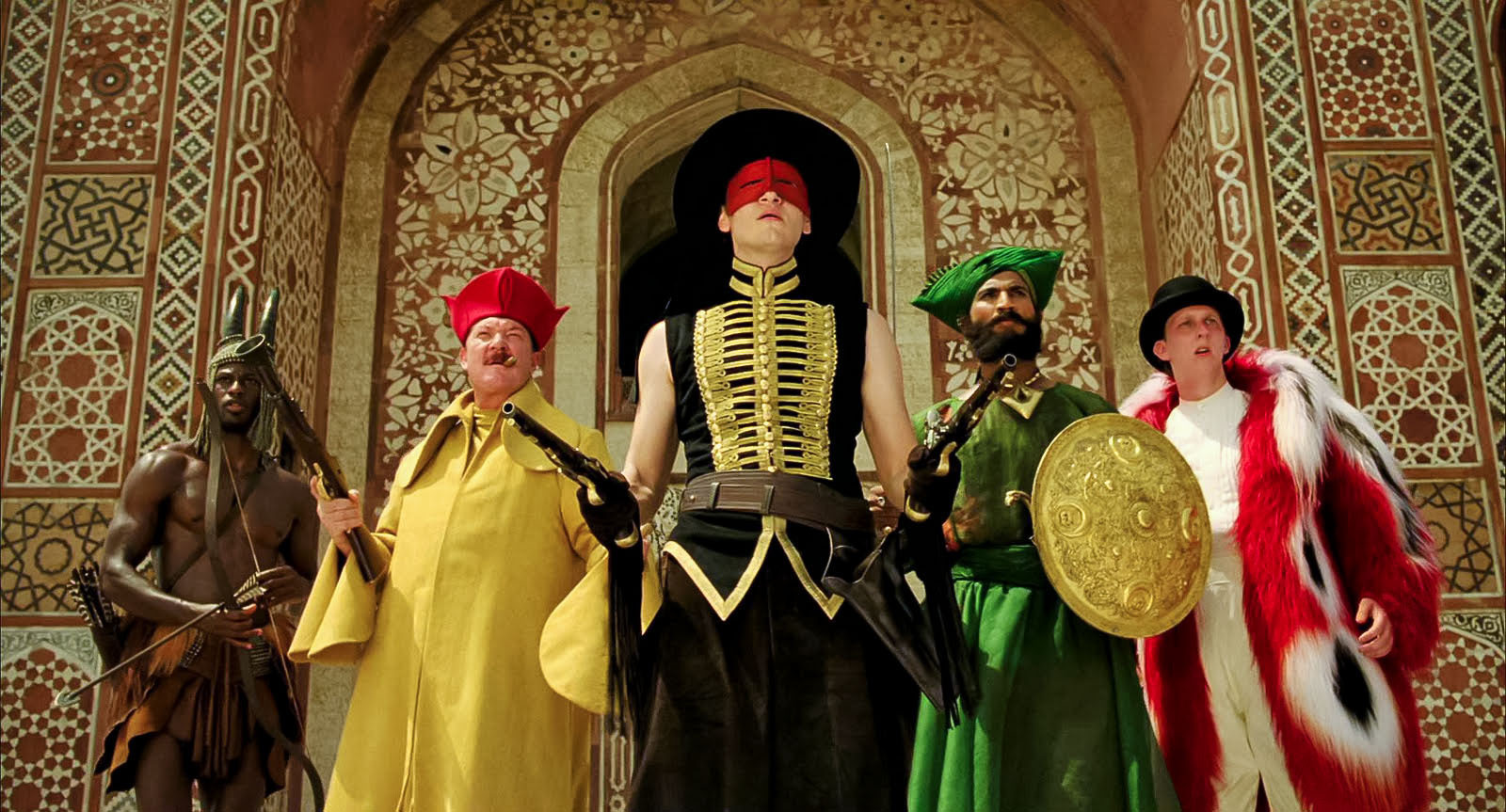
The Fall is a beautiful film no matter which way you look at it. Slated as an Action / Comedy / Drama on IMDB, and set in a hospital during the early 20th century, this is the touching story of a little girls friendship with a stunt man, both of whom are the victims of a fall. Her’s from a tree picking fruit as a child laborer, while his is from a bridge in the opening sequence, doing what amounts to a suicidal stunt for an early black and white “flicker”, as he calls them.
While the film is set in Hollywood in the early days of cinema, a great portion of the film itself occurs as a vibrant and colorful vision. It is a spectacle portraying an elaborate story of love, revenge and betrayal, which Roy narrates to Alexandria in order to get her to obtain enough morphine for him to kill himself and propelling the central emotional arc of the story.
This hyper-real alternate world is the product of the young girl’s imagination as she re-interprets Roy’s words, taking aspects of the real world story, such as Doctors, nurses, patients and other people; as well as sets and costume-elements—with themselves becoming the lead roles in the inner-story world.
Produced in 2006 and directed by Tarsem Singh, (You may know Tarsem from such films as The Cell, Immortals and Mirror Mirror—as well as the legendary, multi-award winning R.E.M. Music video, Losing My Religion), The Fall is a stunning visual masterpiece that draws from a variety of cultural backgrounds and pays homage to numerous other works. Sometimes in obvious and slightly irritating ways.
Take for example the two scenes lifted directly from Baraka and reproduced in a completely out of context and culturally inappropriate stylization of indigenous sacred dances. This is forgivable, perhaps, because the film is so very charming and its actors’ performances so very touching.
Perhaps also because it is almost impossible to assume Tarsem meant any ill will by his almost shot by shot plagiarism. In any case, he manages to do it with incredible beauty, powerful production design, epic cinematography and such stylistic intent that one can only forgive him. In the end, it is the story of the little girl, Alexandria that is most beautiful and it is her performance that will be remembered beyond even the enormous cinematic scope of the images.
8. The Seventh Seal (Cinematographer: Gunnar Fischer)
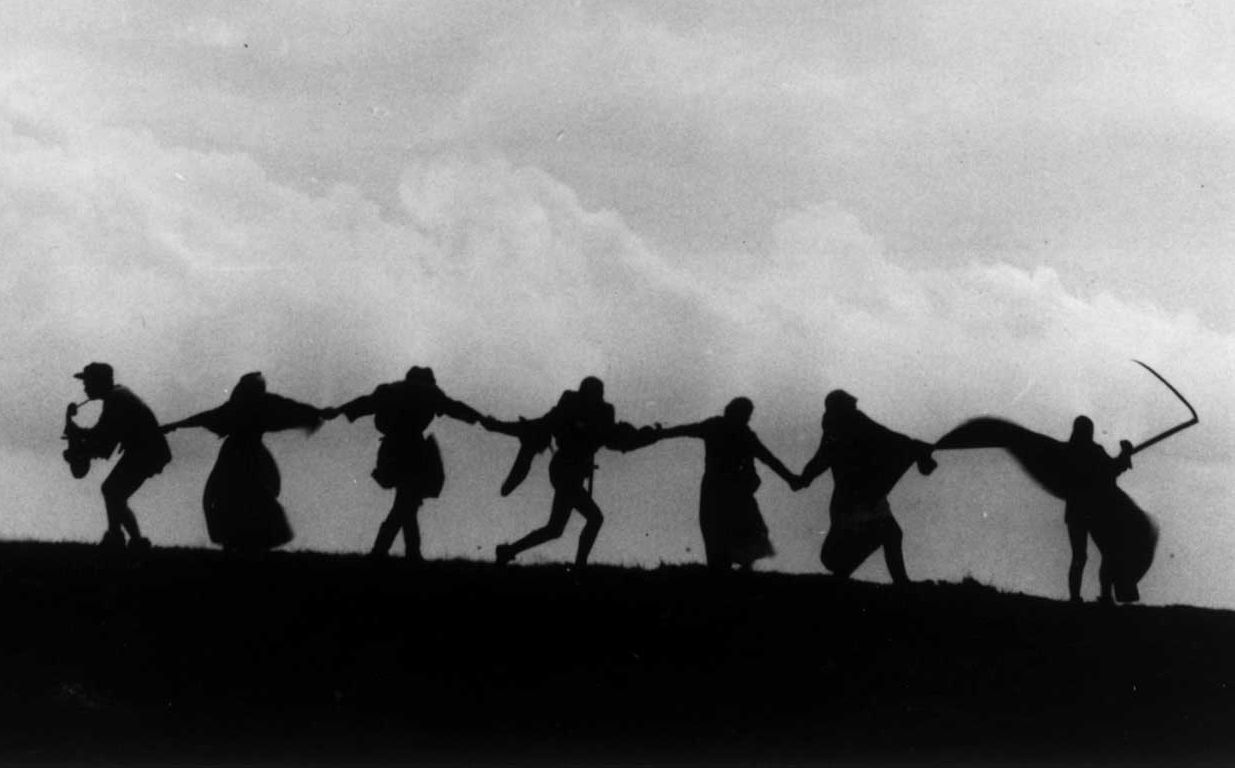
Ingmar Bergman’s 1957 classic, The Seventh Seal is considered one of the greatest films of all time. From its stark surreal beauty to its iconic plot, the imagery of The Seventh Seal is monumental, original and at times terrifying. Despite the film’s dated effects, this black and white vision, a story of a penitent medieval knight seeking redemption in a morbid game of chess has been consistently copied, parodied and analyzed since its inception.
As an adaptation of Bergman’s own play, entitled Wood Painting, which had previously been staged and directed by the man who plays Death in the screen version; film critic Aleksander Kwiatkowski called the film “a universal, timeless allegory.” The plot is straight forward: Swedish Knight, Antonius Block and his squire, Jons, return from the crusades to find their homeland in the grip of the Black Death.
In the opening scene of the film, Antonius is confronted by Death himself, whom he challenges to a game of chess in order to forestall his imminent demise. Accepting his proposition, the game then continues over the course of the narrative as Block and his squire pick up a small band of actors and other hangers-on who Bergman expertly uses to illuminate specific aspects of the human condition.
The Seventh Seal is beautiful for its originality, its stark cinematography, its deep blacks and awesome contrast and for the crisp perfection of its philosophical ideas. It asks the question, does God exist? It answers that question with uncertainty but reminds us that death, however, is unequivocal.
7. Apocalypse Now (Cinematographer: Vittorio Storaro)
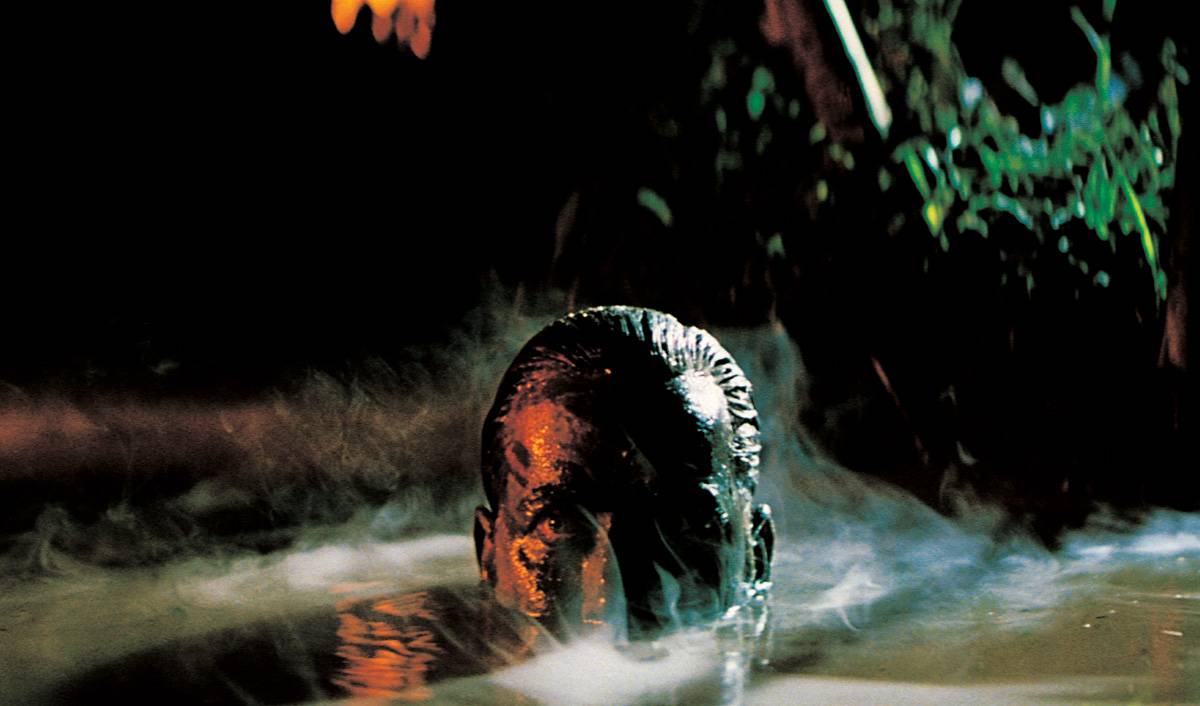
Fraught with controversy, Francis Ford Coppola’s adaptation of Josoph Conrad’s novel Heart of Darkness was, by all accounts, a nightmare to film from woe to go. From Martin Sheen’s heart attack on location in the Philippines, to Marlon Brando’s complete lack of professionalism on and off set, through to the rampant drug use of crew and cast members and the harsh shooting conditions of the jungle—Apocalypse Now suffered massive budget and schedule overruns that forced the New Hollywood director to throw enormous sums of his own money at the project just to keep it afloat.
While ostensibly about an assassin heading deep into hostile territory to evaluate and kill a rogue general, the story’s visual fabric and stunning soundtrack runs deeply parallel with the zeitgeist of the late 1970’s depicting the Vietnam war as a series of brutal atrocities, painting most of the American forces involved as cavalier, psychotic thrill seekers or victims of rampant nationalism and propaganda. One will never forget Colonel Kilgore’s melodramatic but thematically revealing monologue on the beach. The second most famous line of the film, “I love the smell of napalm in the morning.”
The film itself wades deep into some of the darkest human territory ever committed to celluloid and depicts senseless graphic violence with a naturalistic aesthetic that is disturbing and disarmingly beautiful at times. The scenes of napalm exploding over and through large tracts of jungle, filmed without supervision in the Philippines, are both environmentally irresponsible but undeniably powerful images that invoke the question: does this filmmaking travesty justify its means?
6. The Tree of Life (Cinematographer: Emmanuel Lubezki)
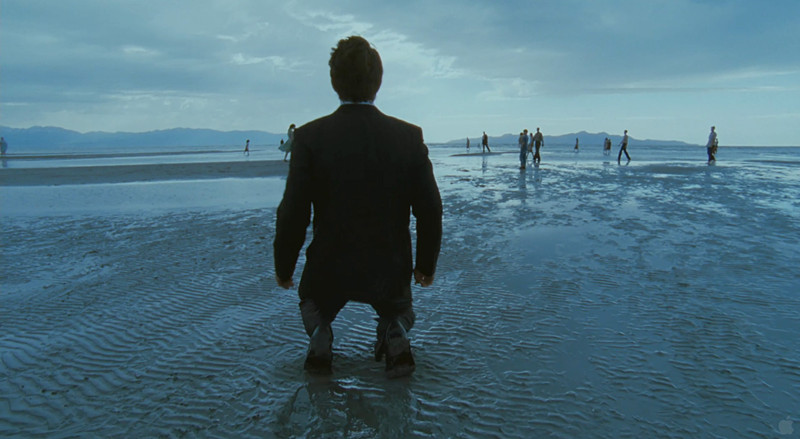
Acclaimed director Terrence Malick’s (The Thin Red Line, Days of Heaven, Badlands) two hour and twenty minute long coming of age story about two brothers growing up in 1950’s Texas and their difficult family relationships has only a cursory connection with what mystics and qabalists of the Jewish mystery schools would consider The Tree of Life.
It is instead a slow, meandering psuedo-art film realized with subtle, subjective cinematography from Emmanuel Lubezki (Gravity, The Revenant, Birdman) and spare, period production design from Jack Fisk (The Revenant, There Will be Blood and David Lynch’s Mulholland Drive) lending it a sense of mood, personal drama and a kind of nostalgic self-importance.
Despite having very little to do with anybody’s rendition of The Tree Of Life (as a religious or philosophical construct at least), Malick manages to deliver a genuinely sublime experience that includes deep forays into the characters’ imaginations and their formative experiences. These include flashbacks as well as some epic sequences of cosmic and prehistoric events that give texture to the existential treatment of the narrative in a way that superficially appears to deliver meaning. Make no mistake, this is an illusion.
The plot is an insipid, invitation to stay well within your safety zone and the film does nothing truly experimental that has not been done before, better and more meaningfully in a short film or an actual art film. This is Hollywood congratulating itself while reinforcing the white, middle class, mainstream status quo.
Touted as a drama / fantasy, this fairly mundane popular art film is actually pretty low key. Purportedly biographical, the film is not especially clever, not especially insightful and not especially interesting either. It is however undeniably beautiful and well shot. Using its restrained, slow and somewhat naturalistic style, it tries to illicit feelings of childhood and convey a kind of innocence and honesty that has ‘Oscar bait’ written all over it.
Apparently it worked as intended and in 2011 it scooped the Palme d’or at Cannes and then went on to be nominated for three Academy Awards: Best Picture, Best Director and Best Cinematography. The movie, The Tree of Life is beautiful for no other reason than it’s really pretty and inoffensive.